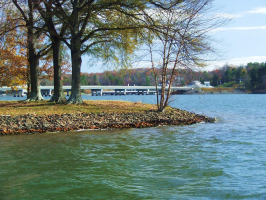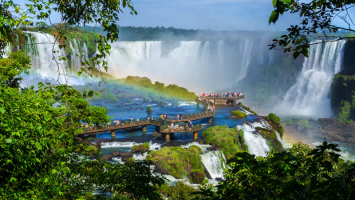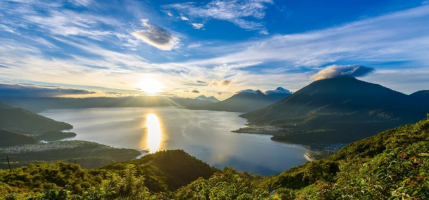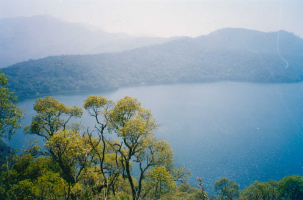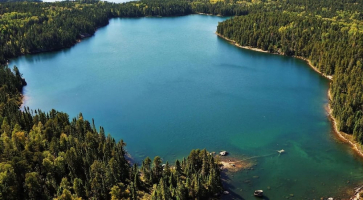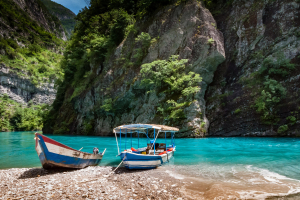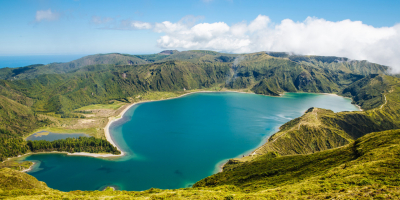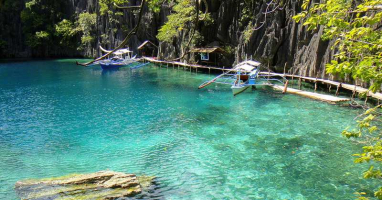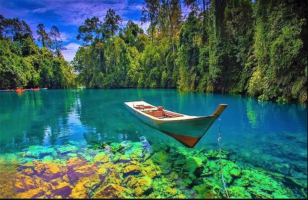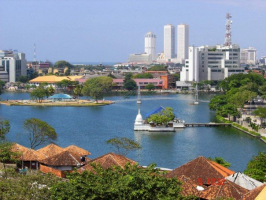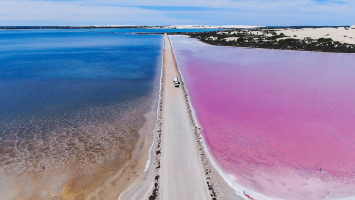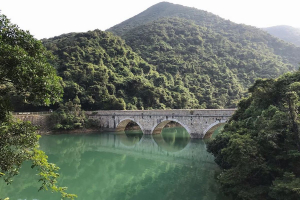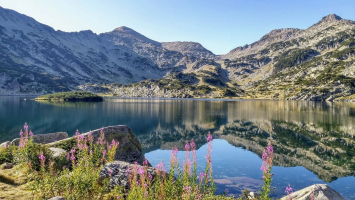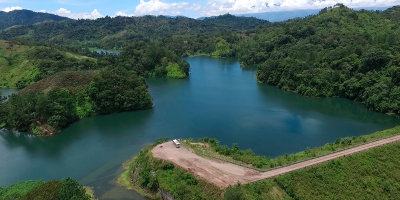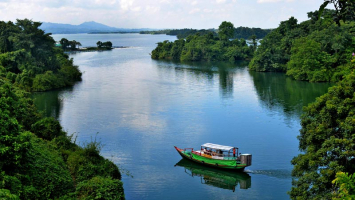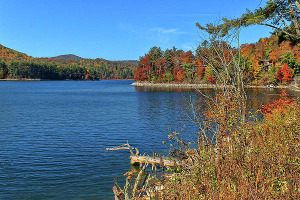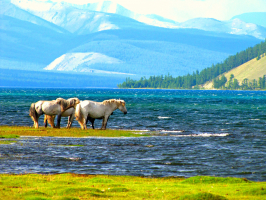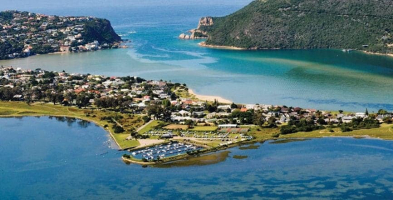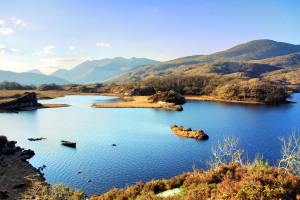Top 12 Most Beautiful Lakes In South America
As a result of the Altiplano plateau and the seemingly infinite Andes ridge, South America is home to an astounding amount of stunning lakes. This area offers ... read more...stunning mountain lakes and vibrant lagoons teeming with flamingos. Let's look at some of the most beautiful lakes in South America to find out.
-
Lake Titicaca is one of the most beautiful lakes in South America and the world that you absolutely have to visit. Lake Titicaca is the largest lake in South America and, at 3800 meters above sea level, the highest navigable lake in the world. It is situated high in the Andes and straddles the boundary between Bolivia and Peru.
Exploring Lake Titicaca is a terrific idea because it is not only lovely but also has some interesting cultures. You won't want to miss exploring these reed-rope-built floating islands, most famous for the Uros Islands. You can visit and observe how the residents of these vast (and impressive) islands live. You could even spend the night on them.
These islands can be very popular, so it may be best to explore ones farther from Puno for a more genuine experience. Visiting Amantani Island is also recommended. This is a terrific spot to stay in the community and learn more about the local culture because it is home to ten communities, each with its own chief.
Isla del Sol is another well-liked tourist destination. The Incans thought this was where their sun deity was born. You can see several well-preserved Incan ruins here, and the area is an excellent place to go hiking. It is not difficult to travel to Lake Titicaca.
On the Peruvian side, the city of Puno serves as an alternative entry point to the lake. You may visit the city's lakeside shops and eateries, its streets lined with Spanish colonial architecture, and its floating Islas Uros, which were built from reeds by the indigenous population here.
Country: Peru - Bolivia
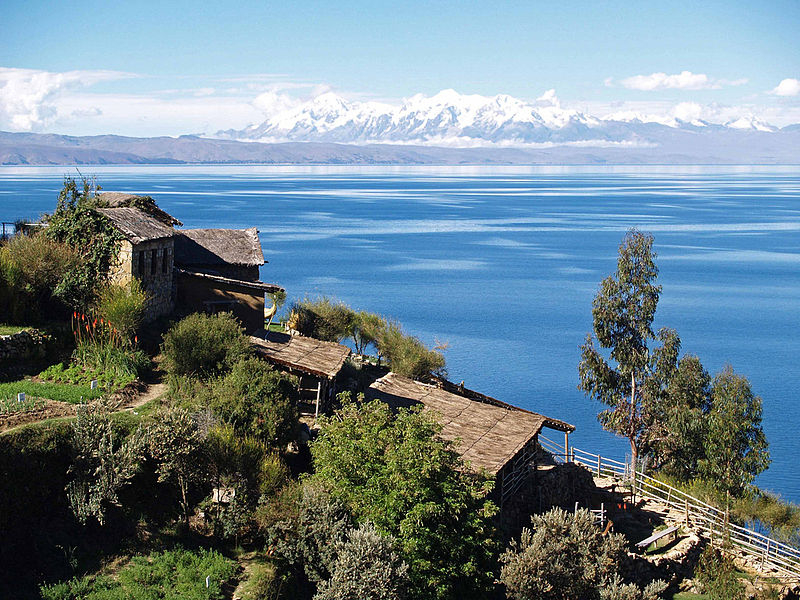
Photo: wikipedia 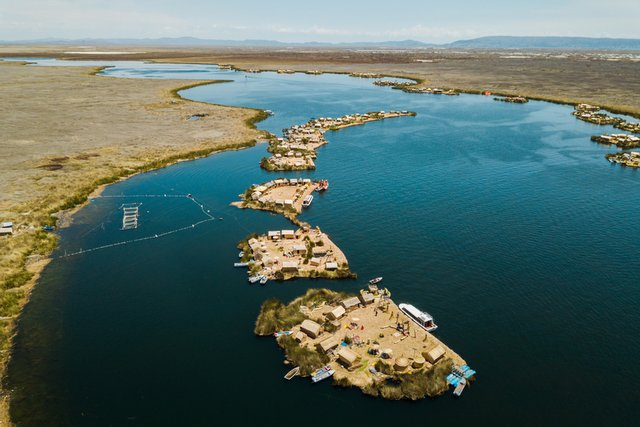
Photo: inditales -
The Lake Guatapé, one of Colombia's most beautiful natural places, was formed after the construction of one of the country's biggest hydroelectric dams. A wonderfully blue, clean lake and innumerable tiny islands made of hilltops were created when the valley was flooded decades ago. Locals and visitors from around the world love visiting this place.
Guatape is famed for the enormous Peón de Guatapé, a towering inselberg that rises over 650 feet above the surrounding area and is unquestionably one of the most well-known sights in South America, in addition to its lovely lake and surroundings. The finest way to take in breathtaking, nearly 360-degree views of the lake is by ascending el Peón de Guatapé, popularly known as el Peól.
It takes 649 stairs to reach the top of el Peól, so wear comfortable shoes and bring water. At the summit, in addition to the stunning views of the lake and the surrounding countryside, there is a small café and spaces to sit and unwind before starting the descent again.
Country: Colombia
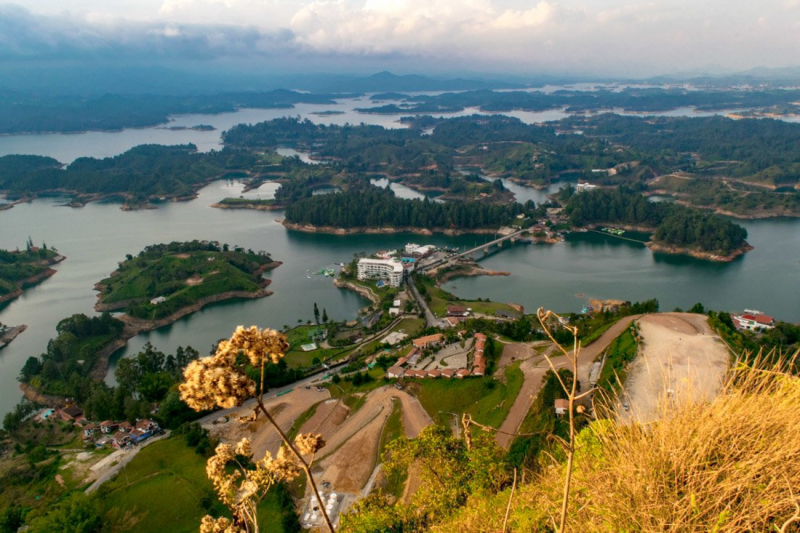
Photo: twoscotsabroad 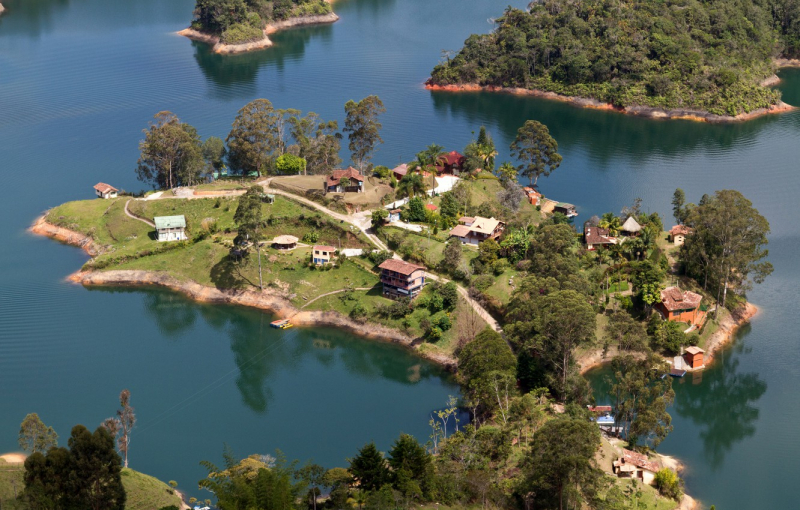
Photo: twoscotsabroad -
Nahuel Huapi, the largest lake in Argentina's Lake District, is a lake in the lake region of northern Patagonia between the provinces of Río Negro and Neuquén, spans more than 500 square kilometers and is encircled by picture-perfect views of mountains and the Valdivian Rainforest. The tourist center of Bariloche is on the southern shore of the lake.
On the southern end of the lake is where San Carlos de Bariloche is situated. This charming city serves as an excellent jumping-off point for seeing the lake and oldest national park in Argentina.
You may climb or take a chairlift up to the summit of Cerro Campanario, which is about 15 kilometers to the west of Bariloche, for a stunning 1,000-meter panoramic view of the lake.
Country: Argentina
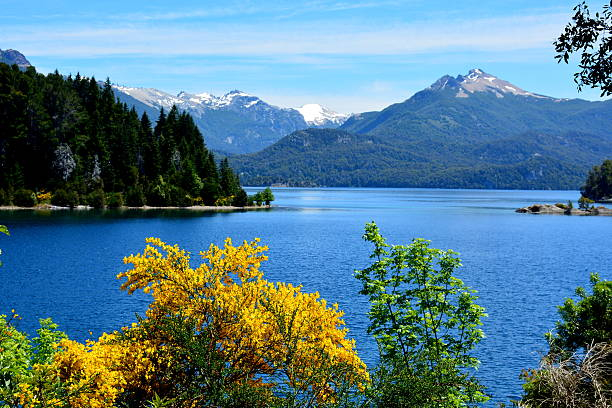
Photo: istock 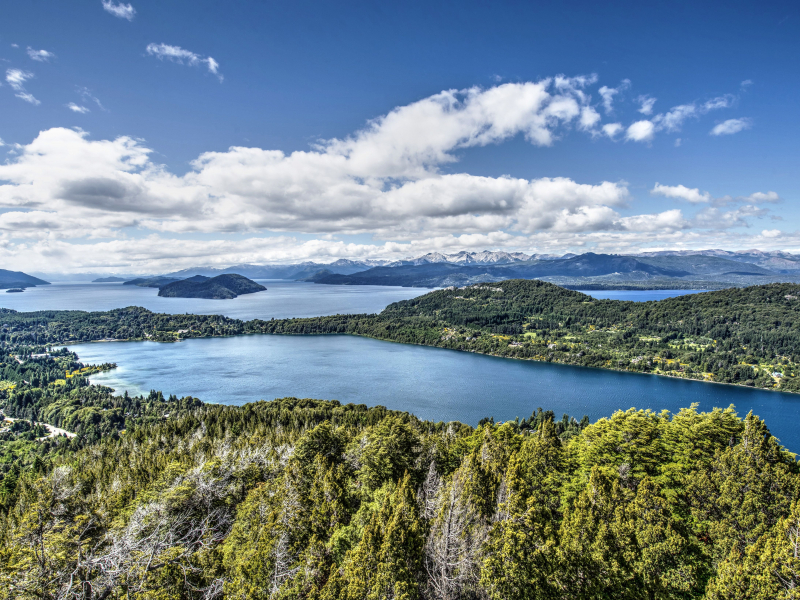
Photo: tripsavvy -
One of the many beautiful lakes in South America is Lake Guatavita in Colombia. The lake is about a two-hour drive from Bogotá, the country's capital. There are several legends and historical accounts about the lake that state that its bottom is covered in gold and silver items. However, most people prefer spending a tranquil day by the lake to prospect for gold. The lake is now a focus of ecotourism, and its association with the legend of El Dorado is also a major attraction.
The lake is 19.8 hectares in size and has a round shape. There is presently no evidence to support the earlier hypotheses that the crater was formed by a meteorite impact, volcanic cinder, or limestone sinkhole. The most plausible explanation is that it was caused by an anticline's salt deposits dissolving underground, creating a type of sinkhole.
Depending on the day of the week, glamping accommodations at the lake might cost as much as $100 USD per night for those who want to stay for more than just one day. Additionally, Sopó paragliding is close by if you want to see the lake from an even higher perspective. Although a little pricey, it offers the most breathtaking perspective of Bogotá. However, bear in mind that it can become quite chilly, so be sure to dress warmly and cover your face from frigid breezes. Don't forget to include Lake Guatavita on your itinerary the next time you're in South America.
Country: Colombia
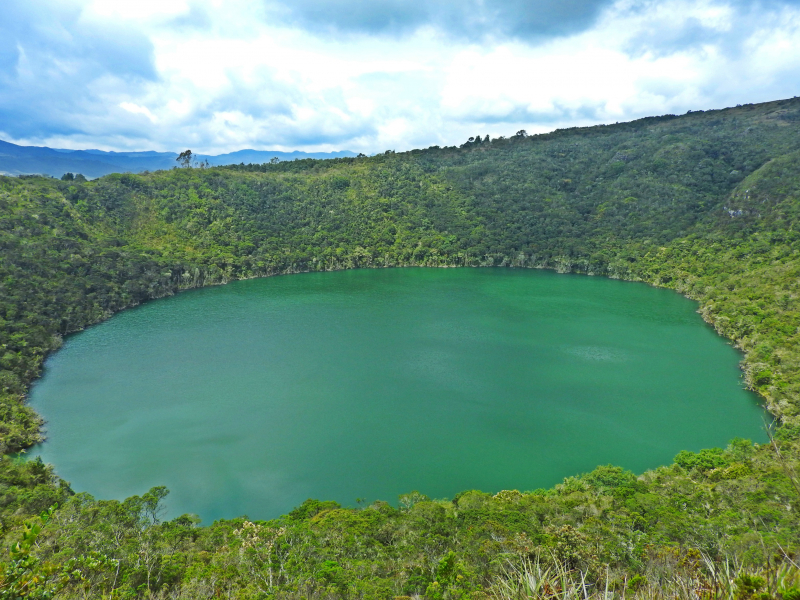
Photo: theculturetrip 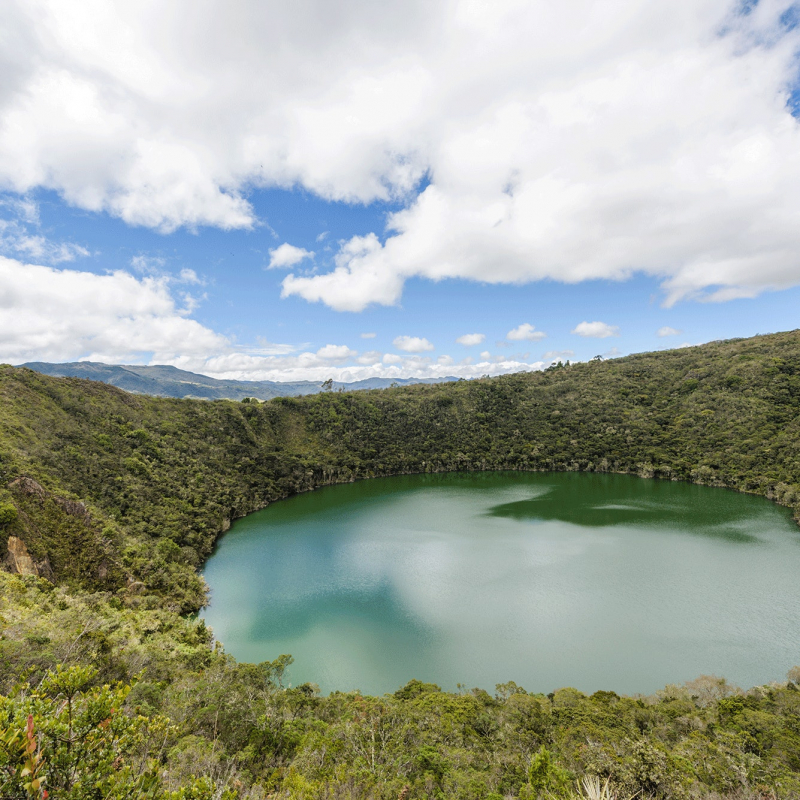
Photo: blacktomato -
The famed lake of Cuicocha is located inside a caldera that is 3 km (2 mi) wide and was created some 3,100 years ago by a tremendous eruption. Since then, the volcano has lain dormant, although the volcanic ash that was released during that earlier eruption helped the region become noted for its nutrient-rich soils.
The most well-known activity at this lake is hiking, although there are many others as well. You will enjoy climbing around Cuicocha's caldera, which is situated at a height of 3,246 meters above sea level, if you are in good shape and have had time to acclimate to the Andes altitude (10,650 ft).You can stroll through the rim without any technical knowledge by following the well-marked track that departs from the tourist center. Depending on how frequently you can stop to take pictures of the location, which no one can ever seem to avoid considering how spectacular the views are, the climb can last anywhere between 5 and 7 hours. Additionally, you have the option of taking a shorter climb to one of the other overlooks situated around the rim and then returning the same way.
If you're going to be in Quito for a few days, take some time to explore the highlands nearby and get a feel for the real Andean culture by going to the towns and mountains there.
Country: Ecuador
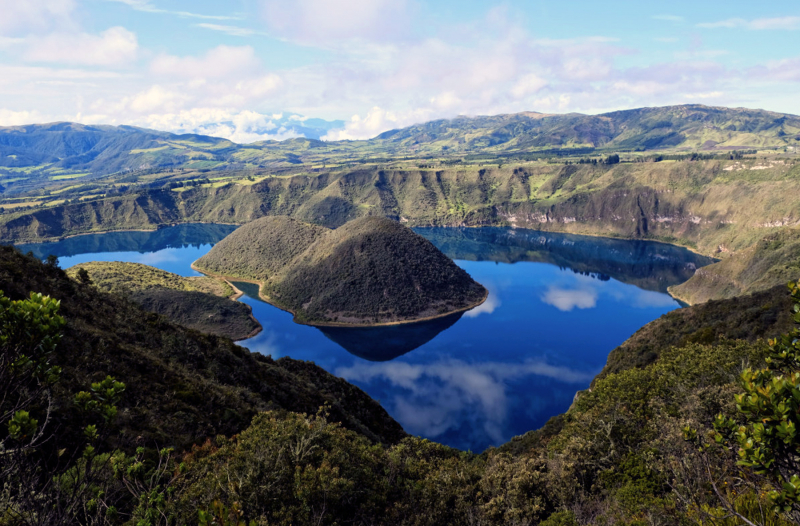
Photo: otavalo 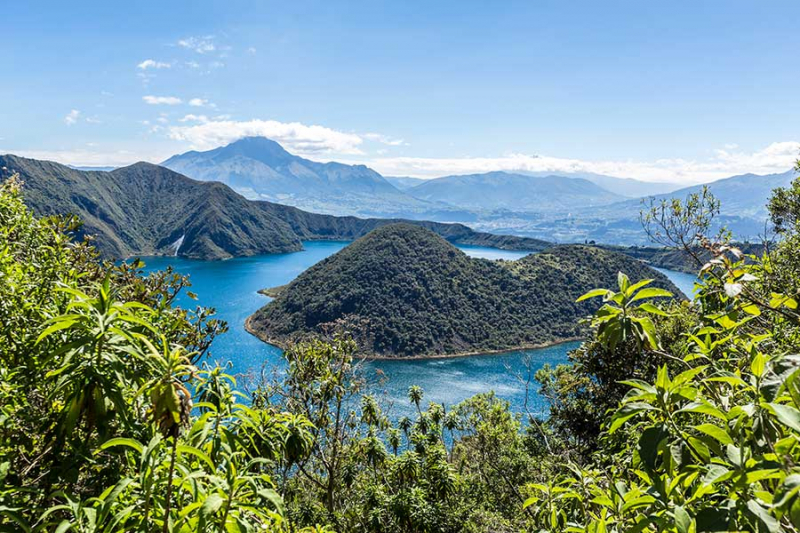
Photo: boundlessroads -
Argentino Lake, one of Argentina's major lake bodies, is located much farther south and spans a sizable area between the South Patagonian Ice Field and the Patagonian Steppe. It is the largest freshwater lake in the nation, and the enormous Perito Moreno Glacier may be seen along its edges.
The lake is surrounded by multiple glaciers and is fed by several rivers' glacial meltwater, water from Lake Viedma delivered by the La Leona River, and numerous mountain streams. It is located within the Los Glaciares National Park. The area of its drainage basin is greater than 17,000 km2 (6,564 sq mi). The Santa Cruz River is the conduit through which water from Argentino Lake enters the Atlantic Ocean.
Important tourist locations include the glaciers, the surrounding community of El Calafate, and the lake itself. Fishing is popular on the lake in particular. There are perch, common galaxias (puyen grande), lake trout, rainbow trout, all of which come in anadromous and potamodromous varieties.
Country: Argentina
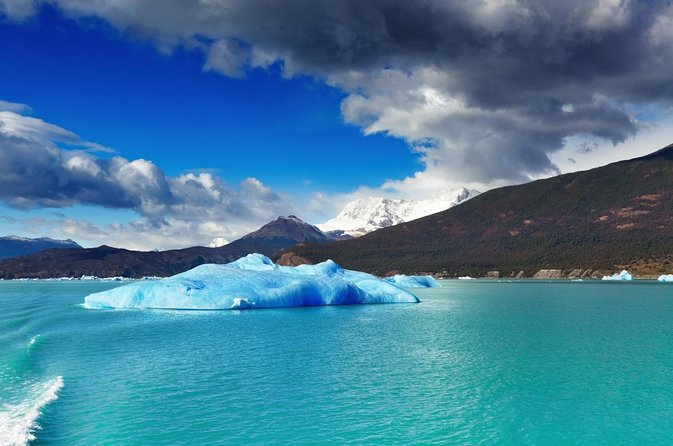
Photo: viator\ 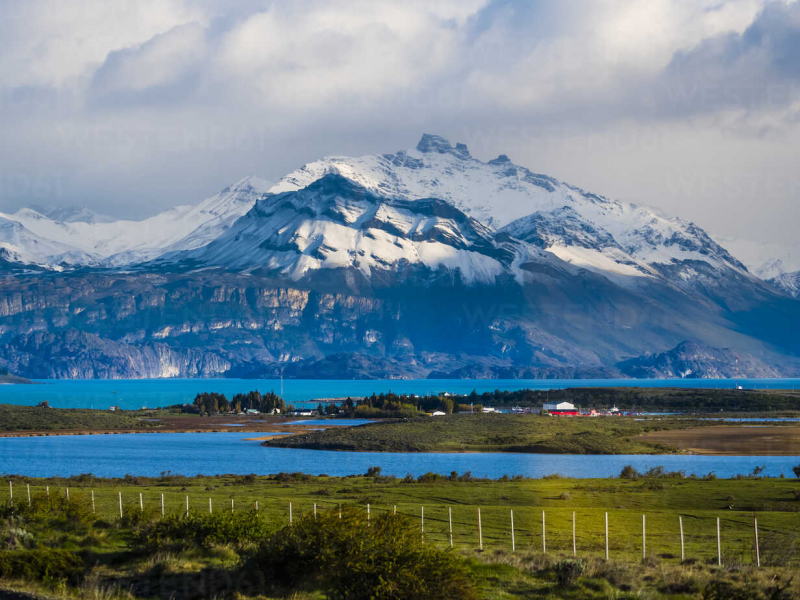
Photo: westend61 -
The breathtaking Red Lagoon is located in the southwest of Bolivia, not far from the Chilean border. Due to its proximity to the renowned Uyuni salt flats, this odd but stunning lake is not well known among travelers. Despite being 6,000 hectares in size, the lake is only a maximum of one meter deep. The rich mineral content and red algae at the lake's bottom are what give the water its vivid color.
It was one of the most beautiful lakes in South America and stunning natural vistas on this region tour, despite being frequently disregarded. We felt as though we had landed on another planet as a result of the lake's bright color and the barren rocky environment.
Flamingos have a natural habitat in Red Lagoon. Flocks of the recognizable pink birds will likely be seen splashing around and taking baths in the red water.
Actually, there are numerous different-colored lagoons nearby that are very close together. Not far away, and frequently included in travel packages, are Laguna Verde and Laguna Blanca (Green Lagoon and White Lagoon). When visiting Bolivia, you must see the stunning Red Lagoon, it is a hidden treasure that is begging to be discovered!
Country: Colombia
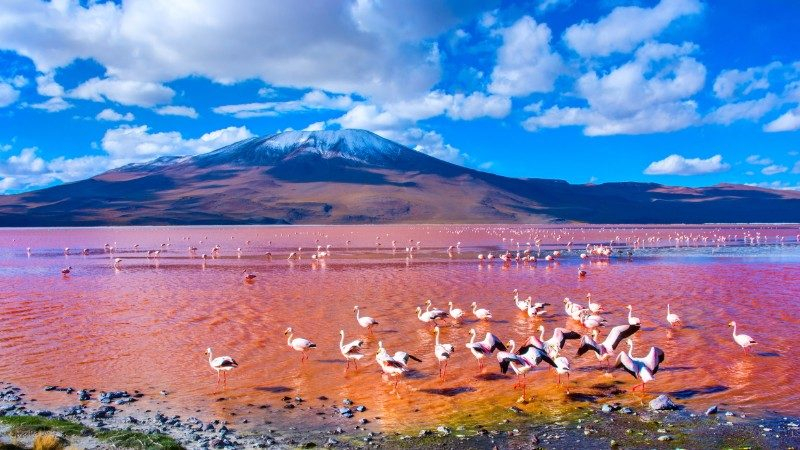
Photo: intrepidtravel 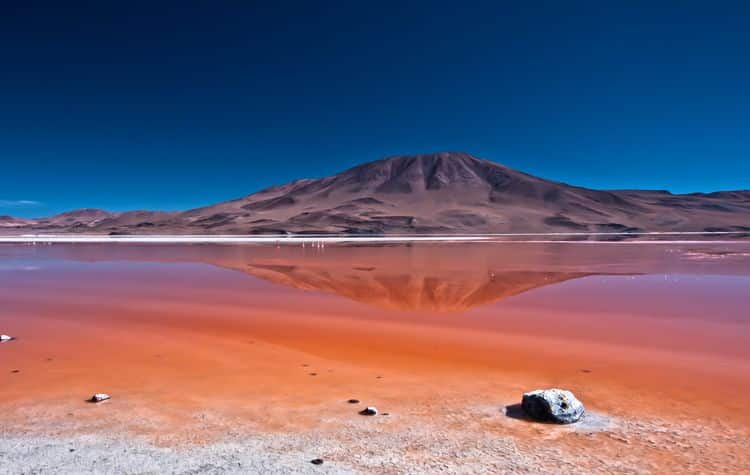
Photo: kuodatravel -
One of the most stunning lakes in Chile's Las Lagos region is the Lake of All Saints, also known as Lago Todos Los Santos. The lovely Puerto Varas is the closest city. Due to the color of its water, it is sometimes referred to as the Emerald Lake. The small hamlet of Puella, the first stop for travelers entering Chile from Argentina, is located on one side of the lake. If you're coming from Puerto Varas or going there, you can take the ferry to and from its charming, tiny port.
The ever-tall Volcanoes of Tronador, Puntiagudo, and Osorno, which are the most stunning of them, surround the lake. As you soar over the lake's emerald green water, you can see how the environment is always changing.
If you're coming from Puerto Varas, the town or village of Puella is a fantastic area to stop for a while when taking a rest on the opposite side. On the opposite side of the lake is Petrohue, which is bordered by the same-named river. It is a well-liked tourist site, and nearby towns provide many of day trip options to make things simple for you.
If you ever find yourself in the area, do not miss Lake of All Saints, one of South America's most breathtaking natural lakes.
Country: Chile
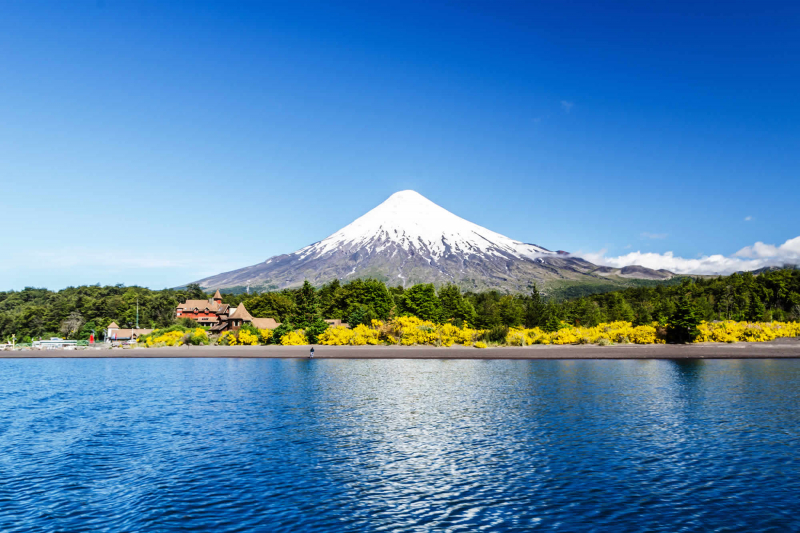
Photo: turistour 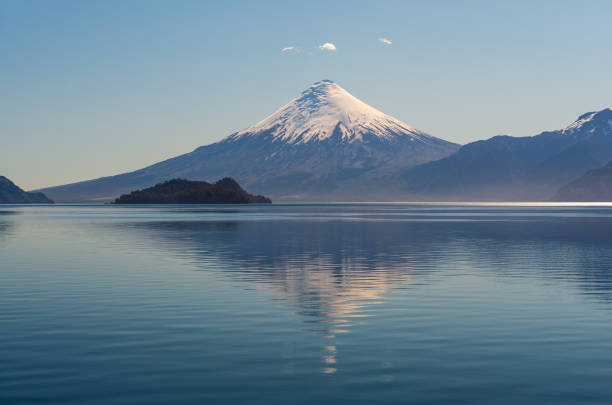
Photo: istock -
One of the most stunning and tranquil lakes in the Patagonian city of Bariloche is undoubtedly Gutierrez Lake. With its stunning mountain vistas and crystal clear water, this location is ideal for relaxing and soaking up some sun.
You may take a quick day trip from the base of the Cerro Catedral Alta ski center down to the northern side of Gutiérrez Lake if you're in the area during the transitional period between the skiing and trekking seasons. The tranquil pebble beach at this lake's end is a nice location for a picnic stop. You can also carry on walking along the lake's shore, which takes you into a forest and to Cascada de los Duendes' soothing waterfalls.
Although there are public beaches on the lake (where you can also rent kayaks), they may get rather crowded during the peak season, so instead, set up camp in a quiet area. Considering how large this lake is, this is not a tough task.
The Cascada de los Duendes waterfall and the Gutierrez Lake vantage point are additional attractions close to the lake (both require some easy hiking). Around the lake, there are roughly five campsites and a ton of nice cottages where you can spend the night.Country: Argentina
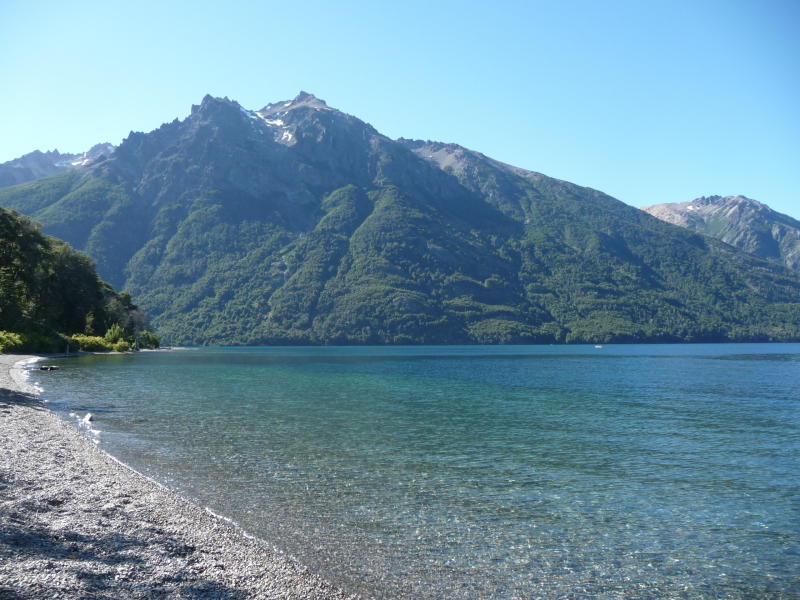
Photo: wikipedia 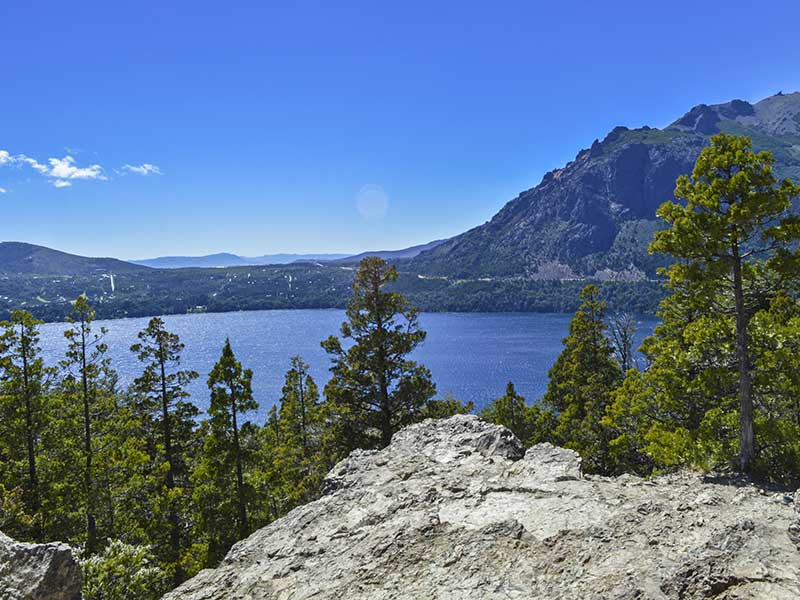
Photo: barilochetrekking -
Many of Peru's interior lakes are small, high inland features scattered among the enormous expanse of mountains in the country, with Lake Titicaca being the notable exception. Lake Parón, which is located in the Cordillera Blanca range at a height of 4,200 meters, is one of the most stunning examples.
The four-kilometer Lake Parón, also called Laguna Parón, is a magnificent body of azure water surrounded by soaring mountains. It is the end of a well-known 20-kilometer roundtrip hiking track, which is frequently used as a warm-up for the longer Santa Cruz hike.
There are other trails that go alongside the lakes where you can stroll while taking in the breathtaking scenery. Anybody can enjoy this wonderful lake. If you don't want to or are unable to walk, you can simply sit on the benches and take in the scenery.
Country: Peru
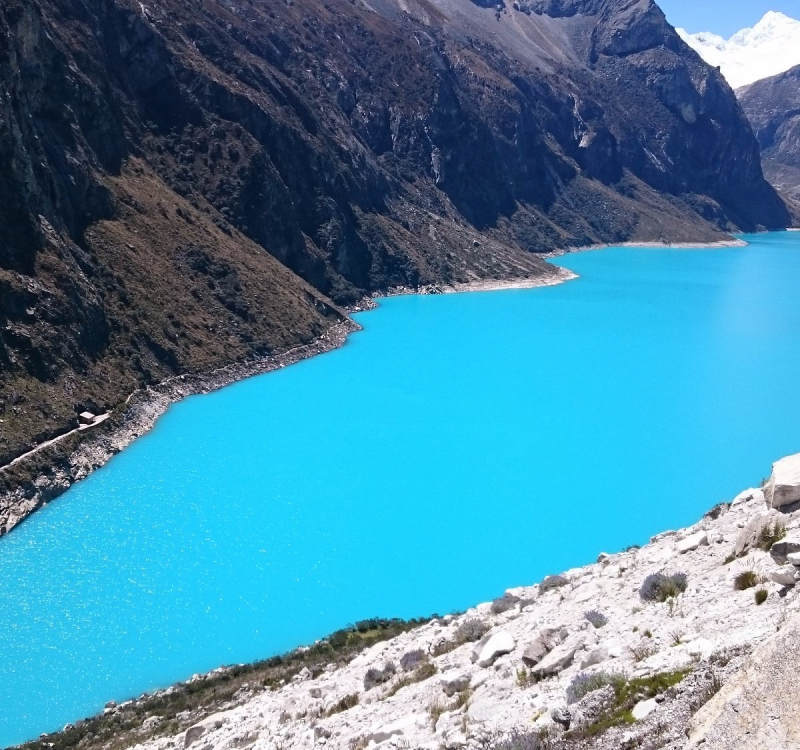
Photo: Tripadvisor 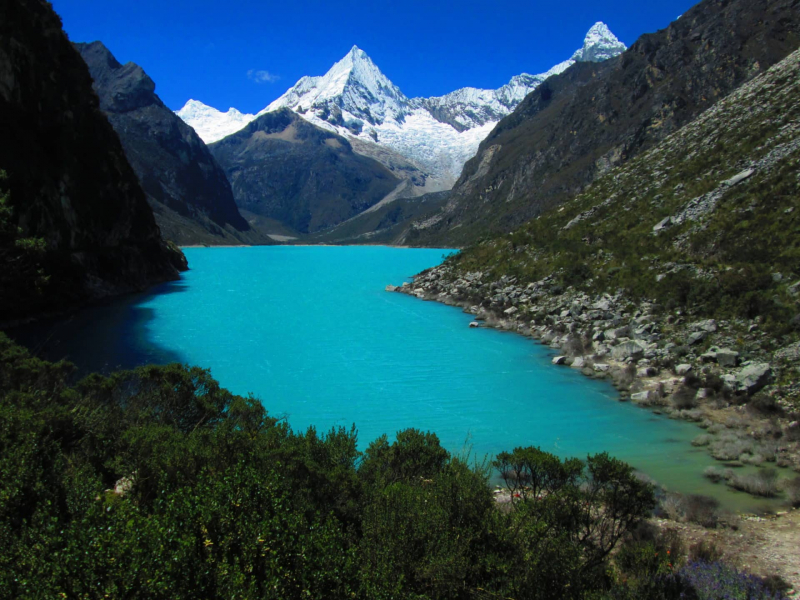
Photo: explore-share -
In the Cordillera Blanca in Peru, a portion of the Huascarán National Park. You are welcome to visit Llanganuco Lake. It is a stunning lake with a blue color that you can get there by bus, and many tourists include it on their itinerary as a means to acclimatize before undertaking more difficult excursions.
In actuality, the only hike required is a quick stroll around the lagoon's rim. You may also rent a boat and enjoy a tour of the lake from the lagoon, or you can simply relax and take in the stunning view of the lake surrounded by snow-capped mountains.
Other fascinating stops along the "Callejon de Huaylas," the lone road dividing the Andean Cordillera Blanca from the Cordilleran Negra, are typically included in the journey to Llanganuco Lake.
Additionally, you'll stop at Carhuaz to sample the regional ice cream made with local fruits. The final visit will be in Yungay, a fascinating town that is best known for being tragically buried by an avalanche during the May 1970 earthquake.
Country: Peru
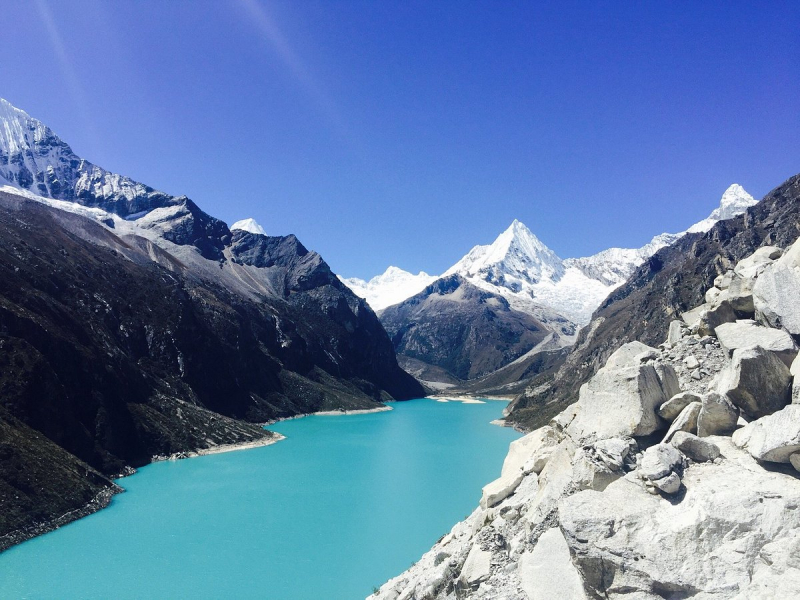
Photo: tripadvisor 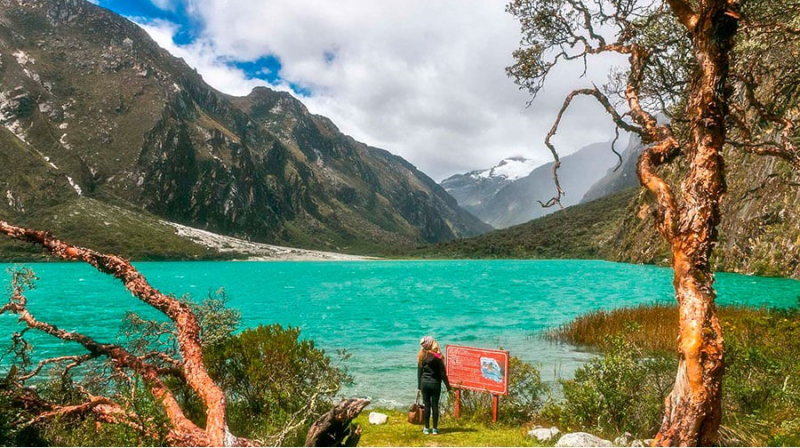
Photo: peru -
The westernmost volcano in Ecuador's Andes, Quilotoa, has a two-mile wide caldera with a lake that is green and turquoise. This creates a beautiful view. The 250-meter-deep crater lake gets its distinctive color from the dissolved volcanic materials left over from previous eruptions. The crater, which was created by volcanic activity in the thirteenth century AD, has lain inactive for a significant portion of Ecuador's history. However, the lake floor has fumaroles, and the eastern rim has a number of hot springs, both of which are evidence of the lake's ongoing geological activity.
The Quilotoa Loop has gained popularity thanks to Quilotoa's Crater Lake. The loop leads visitors into the heart of Ecuador's indigenous Quichua-speaking peoples and into their everyday customs, traditions, and beliefs. The loop passes through a number of tiny Andean settlements, as well as the more well-known communities of Quilotoa and Latacunga. The Ilinizas Reserve, which includes the Ilinizas Twin Peaks volcanos, some stretches of cloud forest, as well as a close-up look at local artists and indigenous markets that preserve the centuries-old culture, are also included in the loop's attractions. However, the crater lake's azure waters may be its most well-known draw. The Quilotoa Loop is a rare chance to stroll over old roads capped by ice volcanoes in Ecuadorian exploration, where many myths were created and a great deal of history was lost.
Country: Ecuador
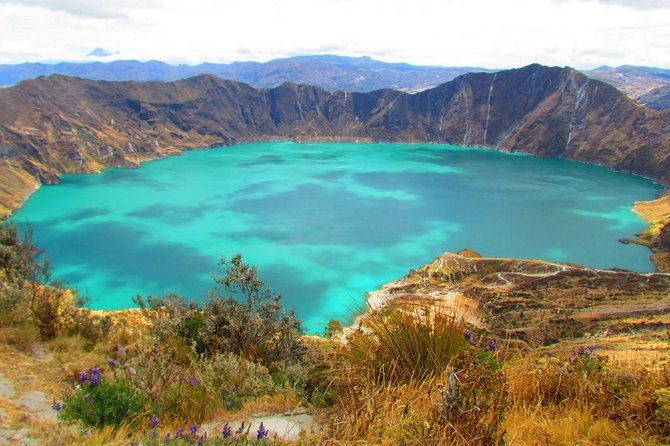
Photo: viator 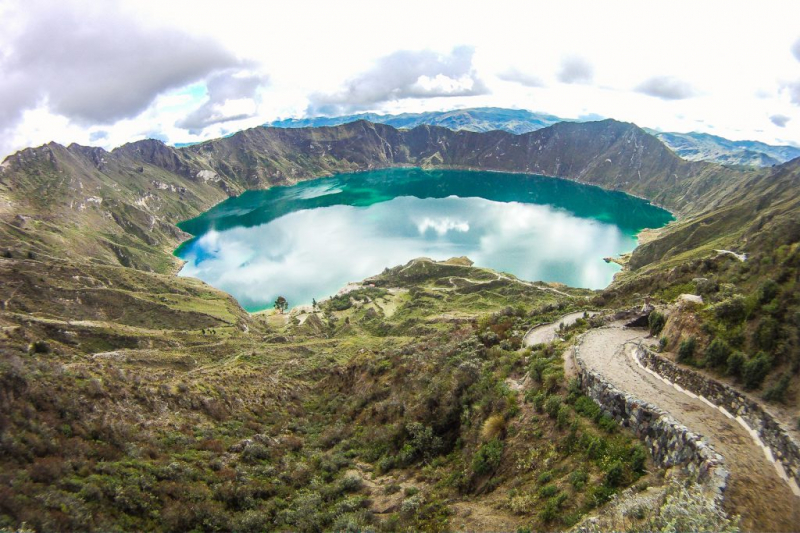
Photo: flyingandtravel














